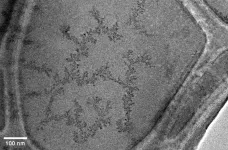(Press-News.org) The National Institute of Standards and Technology (NIST) has selected Florida Atlantic University’s Hamming Quasi-Cyclic (HQC) for standardization in its Post-Quantum Cryptography (PQC) project. After a thorough evaluation process, NIST selected HQC to be part of the new generation of encryption standards, for its ability to meet its criteria for security, efficiency and practical implementation.
HQC is a cryptographic algorithm designed to ensure secure key exchange between two parties, enabling them to share a common, secret key that can be used to encrypt and decrypt messages. This key exchange is a critical aspect of securing communication channels, ensuring that both sides have the same encryption key without the risk of interception. HQC is a next-generation cryptographic solution that aims to safeguard sensitive digital communications, offering robust protection both today and against the emerging threats of quantum computing in the future.
HQC will be the second key-encapsulation mechanism (KEM) to be standardized by NIST, with the first being ML-KEM. KEMs are essential for secure communication, as they are used to exchange encryption keys safely between parties. FAU is the only U.S. university involved among all the authors of the two winning KEM schemes selected by NIST, highlighting its prominent role in the field of post-quantum cryptography.
“The selection of HQC is a major step forward in preparing for a future where quantum computers will disrupt current encryption systems,” said Edoardo Persichetti, Ph.D., an associate professor in the Department of Mathematics and Statistics within the FAU Charles E. Schmidt College of Science. “What sets HQC apart is its quantum-resistant security. Unlike traditional cryptographic methods, which could be broken by powerful quantum computers, HQC is designed specifically to withstand attacks from these advanced machines. This makes it a ‘post-quantum’ cryptographic solution, meaning it’s built to protect against future threats posed by quantum computing.”
Persichetti submitted four algorithms to NIST’s competition, with three of them reaching the conclusive round, where HQC was selected as the winner.
The PQC initiative, launched by NIST in 2016, is a project aimed at developing new cryptographic standards that can withstand the potential threats posed by quantum computers. Quantum computers have the ability to solve mathematical problems that traditional computers cannot, which could render current encryption systems like RSA and ECC (Elliptic Curve Cryptography) vulnerable. These systems are widely used to protect sensitive data and communications.
The HQC team is predominantly based in France, while the authors of Kyber/ML-KEM come from a diverse array of countries, including Belgium, Germany, Switzerland and Canada.
Shi Bai, Ph.D., an associate professor in FAU’s Department of Mathematics and Statistics, previously contributed to NIST’s PQC initiative. He played a key role in developing the CRYSTALS-DILITHIUM digital signature algorithm, which was selected for standardization. His work advanced quantum-resistant cryptographic solutions, helping shape the future of secure digital communications.
"This achievement underscores the power of international collaboration in advancing post-quantum cryptography, and is a testament to the global impact of our research,” said Valery Forbes, Ph.D., dean of the Charles E. Schmidt College of Science. “It is also a moment of immense pride for our cryptography team in the Schmidt College of Science, galvanizing our position as a leading force in securing the future of digital information in the United States, particularly in the pivotal field of post-quantum cryptography.”
Founded in 1901 and now part of the U.S. Department of Commerce, NIST is one of the nation’s oldest physical science laboratories. Established by Congress to address the nation’s lagging measurement infrastructure at the time, NIST’s work now supports technologies ranging from smart grids and electronic health records to atomic clocks, nanomaterials and computer chips. Its measurements impact everything from nanoscale devices to earthquake-resistant skyscrapers and global communication networks, driving innovation and strengthening U.S. industrial competitiveness while enhancing economic security and quality of life.
“By addressing this future risk now, the PQC initiative aims to ensure that critical systems for data protection, digital signatures, and secure communications will continue to function securely in the quantum era,” said Persichetti. “This ongoing process of evaluation and standardization will provide a foundation for developing quantum-resistant cryptographic algorithms that can secure both current and future digital infrastructures, ensuring privacy and security for generations to come.”
- FAU -
About Florida Atlantic University:
Florida Atlantic University, established in 1961, officially opened its doors in 1964 as the fifth public university in Florida. Today, Florida Atlantic serves more than 30,000 undergraduate and graduate students across six campuses located along the Southeast Florida coast. In recent years, the University has doubled its research expenditures and outpaced its peers in student achievement rates. Through the coexistence of access and excellence, Florida Atlantic embodies an innovative model where traditional achievement gaps vanish. Florida Atlantic is designated as a Hispanic-serving institution, ranked as a top public university by U.S. News & World Report, and holds the designation of “R1: Very High Research Spending and Doctorate Production” by the Carnegie Classification of Institutions of Higher Education. Florida Atlantic shares this status with less than 5% of the nearly 4,000 universities in the United States. For more information, visit www.fau.edu.
END
LOS ANGELES — Researchers at City of Hope®, one of the largest and most advanced cancer research and treatment organizations in the U.S. with its National Medical Center named top 5 in the nation for cancer by U.S. News & World Report, have found that cell mutations are necessary but not always sufficient for tumors to form. Instead, they suggest that additional risk factors that promote tumor growth, like chronic inflammation, are a key trigger for tumor formation.
The study findings, published this month in Cancer Discovery, answer a question that scientists have long asked: Are cell mutations alone ...
March 26, 2025
We Are Vastly Overestimating the Amount of Fresh Water Available for Lithium Mining, New Study Finds
New research led by UMass Amherst hydrologists sounds the alarm over mining practices that have immediate implications for transition to low-carbon economy
AMHERST, Mass. — New research into lithium mining in the “Lithium Triangle” of Chile, Argentina and Bolivia — source of more than half of the world’s lithium resources — shows that the commonly accepted models used ...
March 26, 2025
AMHERST, Mass. – Many native plants in the U.S. cannot possibly move themselves fast enough to avoid climate-change driven extinction. If these native plants are going to have any chance of surviving into the future, they’ll need human help to move into adjacent areas, a process known as “managed relocation.” And yet, there’s no guarantee that a plant will thrive in a new area. Furthermore, movement of introduced plants, albeit over much larger distances, is exactly how the problem of invasive species began—think of kudzu-choked forests, wetlands taken over by purple ...
SAN DIEGO, March 26, 2025 — On the shelves of makeup counters and drugstores sits an array of foundations in various olive, ivory and fair shades. But for people with darker skin tones, finding the right foundation shade can be a challenge. Dark foundations on the market often fall flat, appearing gray-like once applied on the skin. But now, researchers report a blue cosmetic color additive that gives these foundations the warmth and depth they currently lack.
Gabriella Baki, associate professor of pharmaceutics and director of the cosmetic science and formulation design undergraduate program at the University of ...
SAN DIEGO, March 26, 2025 — Sometimes cell phones die sooner than expected or electric vehicles don’t have enough charge to reach their destination. The rechargeable lithium-ion (Li-ion) batteries in these and other devices typically last hours or days between charging. However, with repeated use, batteries degrade and need to be recharged more frequently. Now, researchers are considering radiocarbon as a source for safe, small and affordable nuclear batteries that could last decades or longer without charging.
Su-Il In, a professor at Daegu Gyeongbuk Institute of Science & Technology, will present his results at the spring meeting of the American Chemical ...
SAN DIEGO, March 26, 2025 — Can you imagine a smartphone with a wooden touchscreen? Or a house with wooden windows? Probably not — unless you’ve heard of transparent wood. Made by modifying wood’s natural structure, this material has been proposed as a sturdy, eco-friendly plastic alternative. But wood’s biodegradability is often sacrificed in the process. Researchers are hoping to change that by creating transparent woods from almost entirely natural materials and making them electrically conductive.
The researchers will present their results at the spring ...
Statement Highlights:
By age 18, many adolescents have already developed heart disease risk factors, such as high blood pressure, obesity, high cholesterol or Type 2 diabetes, and a growing number of younger adults are experiencing adverse cardiovascular events.
Numerous social determinants of health and developmental and life changes impact cardiovascular risk as young people progress from their teens to their mid-20s.
The statement describes the challenges and opportunities for easing the transition ...
Those who start work earlier express more discomfort with the seasonal time change. This is the main conclusion of a study that the lecturers at the University of Santiago de Compostela (USC) and the University of Seville (US), Jorge Mira Pérez and José María Martín Olalla, have just published in the journal Chronobiology International, in which they analyse in detail the results of the public consultation organised by the European Commission in 2018 in the then 28 member states, which ...
Scientists have for the first time filmed the real-time growth and contraction of Palladium nanoparticles, opening new avenues for utilising and recycling precious metal catalysts.
Researchers at the University of Nottingham’s School of Chemistry used transmission electron microscopy (TEM) to observe the complete lifecycle of palladium nanoparticles in a liquid environment, from nucleation through growth to dissolution, with the entire cycle repeating multiple times. This study has been published today in Nanoscale.
One of the most important applications of metal nanoparticles is in catalysis, which forms a backbone of chemical industries. Dr Jesum Alves ...
The world’s amphibians are in trouble. Because of their sensitivity to climate change, habitat loss, and pollution, they may be the canary in the coalmine for the nascent anthropogenic mass extinction. Approximately 200 amphibian species have become extinct since the 1970s, and the International Union for the Conservation of Nature estimates that 34% of the 7,296 known remaining species are likewise at risk.
Another reason why amphibians are vulnerable is their susceptibility to disease. An emerging, potentially deadly disease of frogs and salamanders is ranavirus, a genus of at least seven species within the family Iridoviridae. Ranavirus can rapidly jump ...







